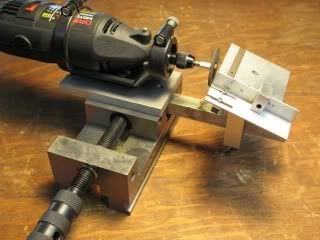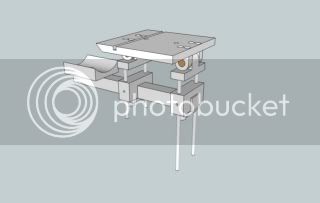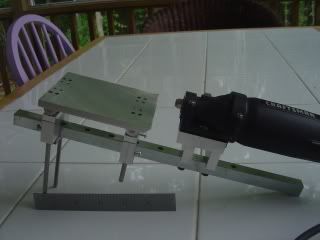mklotz
Well-Known Member
Dave,
There's nothing sacred in the design - no critical dimensions or materials. The design of the Dremel mount will depend on what sort of (Dremel) fixture you buy and the materials you have to hand.
After you have the tool mounted and have a "backbone" in place use your creativity in designing whatever sort of ancillary fixtures you need for the type of work you anticipate. After you have the basic structure in place, ideas for further attachments will occur to you as you use it.
There's nothing sacred in the design - no critical dimensions or materials. The design of the Dremel mount will depend on what sort of (Dremel) fixture you buy and the materials you have to hand.
After you have the tool mounted and have a "backbone" in place use your creativity in designing whatever sort of ancillary fixtures you need for the type of work you anticipate. After you have the basic structure in place, ideas for further attachments will occur to you as you use it.
















